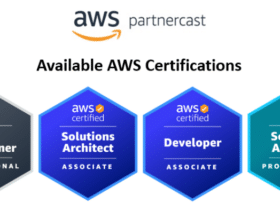Bridge software has become a component for companies, aiding in the efficient management and optimization of their operations. Integrating bridge software can impact organizations, so it’s vital to approach the process with careful consideration and attention to detail. In this blog, we will delve into the steps for implementing bridge software, from its setup to ensuring sustained success.
1. Evaluate Your Business Requirements
Evaluating your company’s needs is crucial before implementing bridge software. Pinpoint the challenges you aim to address with the software and outline your requirements. This assessment will assist you in selecting the bridge software solution for your company.
2. Explore Bridge Software Alternatives
The market presents an array of bridge software options, all vying to be ideal fits for your business. Conduct research to identify providers known for delivering dependable and efficient solutions. Also, review feedback. Seek recommendations from industry peers who have integrated similar software solutions.
3. Prepare for Change Management
Introducing technology often necessitates change management strategies to facilitate a transition. Ready your team by communicating changes and elucidating how these changes will benefit both them and the organization as a whole. To address any concerns or resistance, offer training sessions and resources to support employees in adapting
4. Establish Clear Objectives and Expectations
After selecting a bridge software solution, define goals and expectations for its implementation. Clearly outline what success means for your organization using metrics such as productivity or reduced operational expenses. Share these objectives with your team to ensure everyone is working towards achieving them.
5. Allocate Dedicated Resources
To implement bridge software successfully, resources such as personnel, budget, and time commitments must be allocated. Appoint a project manager to oversee the implementation process, ensuring tasks are completed on time, and any issues are promptly resolved.
6. Customize Bridge Software Configuration
Most bridge software solutions can be tailored to align with your organization’s business processes. Utilize this capability by configuring the software to match your workflows and requirements. Customization allows you to optimize the software benefits and tailor it to meet your needs.
7. Data Migration and Integration
If you are transitioning from legacy systems or have data stored on platforms, consider how you will migrate and integrate that data into the bridge software. Ensure documentation and planning for a migration process. Work together with IT professionals. Reach out to the software provider for assistance if necessary.
8. Training and Assistance
To ensure that the bridge software is effectively integrated, conduct training sessions for all staff members who will use the software. Encourage participation in learning and questions during these sessions. Also, ensure that support is available to address any issues that may arise. Providing detailed user manuals and access to a dedicated helpdesk can further enhance the learning process and ensure smooth adoption.
9. Monitor Performance and Collect Feedback
Implementing bridge software is a process that requires monitoring to achieve sustained success. Regularly assess the performance indicators (KPIs) identified earlier and gather feedback from users about their experience with the software. This feedback will help pinpoint areas for enhancement, thereby improving its utility within your organization.
10. Embrace Continuous Progress
Technology is always advancing, just as business requirements change over time. Embrace a culture of improvement by staying informed about features, updates, and industry best practices related to your selected bridge software solution. Regularly evaluate whether there are modules or integrations that could further optimize your business operations.
Conclusion
Integrating bridge software can elevate your business processes, streamlining workflows and enhancing efficiency in day-to-day activities.
Follow these steps: evaluate your business’s requirements, conduct in-depth research, prepare for managing change, establish objectives, allocate resources effectively, customize as needed, handle data migration and integration, provide training and ongoing support, monitor progress closely, collect input from stakeholders, and embracing a culture of enhancement.
You can secure a smooth implementation of bridge software that will bring long-term advantages to your organization. Therefore, seize the opportunity. Drive your business towards success with the bridge software solution.


















